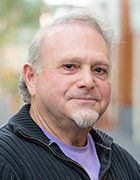
Blockchain and deep neural networks show digital archive promise
Every event, past and present, is in the digital archive, but there is growing concern that this data can be easily manipulated to change historical facts
Researchers from the University of Surrey are set to present a paper in June at the Computer Vision and Pattern Recognition conference in Los Angeles, which describes a way to preserve the integrity of video, artificial intelligence (AI) models and digital archives.
The researchers from Surrey’s Centre for Vision, Speech and Signal Processing (CVSSP) have worked in conjunction with the Open Data Institute and the National Archives to investigate how a system for protecting digital archives could be developed.
Jeni Tennison, CEO of the Open Data Institute, said: “It is becoming easier to manipulate digital records, which makes it crucial for the institutions that take care of those records to be able to demonstrate their trustworthiness.”
The presentation will discuss the work the researchers have done on a project called ArchAngel, which is a secure, decentralised computer vision and blockchain-based system that aims to safeguard the long-term future of digital video archives.
According to the researchers, ArchAngel uses blockchain to secure a database maintained by multiple archives. This means that everyone can check and add records, but no one can change them. They claim that since no data can be modified, the integrity of the historical record remains intact.
Professor John Collomosse, who leads the project at the University of Surrey, said: “Archives across the world are amassing vast volumes of digital content, and it is important that they can prove their provenance and integrity to the public in a secure and transparent way.
“By combining blockchain and artificial intelligence technologies, we have shown that it is possible to safeguard the integrity of archival data in the digital age. It essentially provides a digital fingerprint for archives, making it possible to verify their authenticity.”
In the paper, Cooper and his fellow researchers describe how a deep neural network (DNN) architecture could be trained to distil an audio-visual signature from video, that is sensitive to tampering, irrespective of the video encoding format (codec) used.
The paper explores how video signatures are computed and stored immutably within the ArchAngel blockchain at the time of the video’s ingestion to the archive. The video can be verified against its original signature at any time during curation, including at the point of public release, to ensure the integrity of content, according to the report’s authors.
The University of Surrey said the system has been trialed in national government archives of the UK, Estonia, Norway, Australia and the US.
John Sheridan, digital director of the National Archives, said: “Exploring blockchain technology together with some of the world’s leading archives, the ArchAngel project has shown, for real, how archives might combine forces to protect and assure vital digital evidence for the future.”
He added that the research project has shown how blockchain can be used to assure trust in large-scale digital archives.
ArchAngel is one of the projects at the University of Surrey which is part of its research into alternative non-financial uses of blockchain for the public good.
Read more about digital archives
- The National Archives faces challenges converting the EU's enormous library of laws into a publicly accessible UK archive ahead of Brexit.
- London transport authority has begun moving its first 3TB of corporate archive data to the AWS cloud with the help of Preservica.










